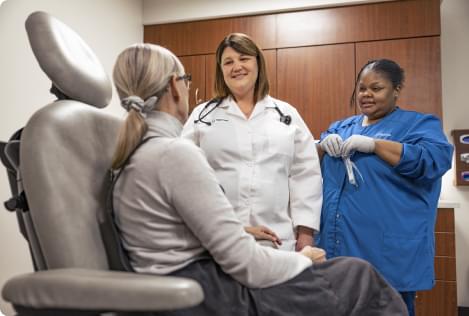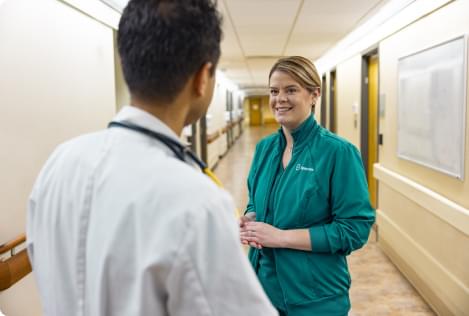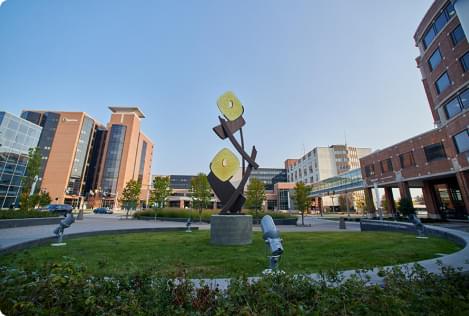Overview
Head lice are tiny insects that feed on blood from the human scalp. Head lice most often affect children. The insects usually spread through direct transfer from the hair of one person to the hair of another.
Having head lice isn't a sign of poor personal hygiene or an unclean living environment. Head lice don't carry bacterial or viral diseases.
Nonprescription and prescription medications can help treat head lice. Follow treatment instructions carefully to rid the scalp and hair of lice and their eggs.
People also use a number of home or natural remedies to get rid of head lice. But there is little to no clinical evidence that they're effective.

Symptoms
Common signs and symptoms of head lice may include:
- Itching. The most common symptom of head lice is itching on the scalp, neck and ears. This is an allergic reaction to louse bites. When a person has head lice for the first time, itching may not occur for 4 to 6 weeks.
- Lice on scalp. You may be able to see the lice, but they're often hard to spot because they're small, avoid light and move quickly.
- Lice eggs (nits) on hair shafts. Nits stick to hair shafts and may be hard to see because they're very tiny. They're easiest to spot around the ears and the hairline of the neck. Empty nits may be easier to spot because they're lighter in color and further from the scalp. However, the presence of nits doesn't mean there are live lice.
- Sores on the scalp, neck and shoulders. Scratching can lead to small, red bumps that may sometimes get infected with bacteria.
When to see a doctor
See a health care provider before you begin treatment if you suspect that you or your child has head lice. Your or your child's health care provider can confirm that head lice are present. Studies show that many children have been treated for head lice with nonprescription medications or home remedies when they didn't have lice.
Things often mistaken for nits include:
- Dandruff
- Residue from hair products
- Beads of dead hair tissue on a hair shaft
- Scabs, dirt or other debris
- Other small insects found in the hair
Causes
A head louse is a tan or grayish insect about the size of a strawberry seed. It feeds on human blood from the scalp. The female louse produces a sticky substance that firmly attaches each egg to the base of a hair shaft less than 1/4 inch (5 millimeters) from the scalp.
The louse life cycle
A louse goes through three stages:
- Eggs that hatch after 6 to 9 days.
- Nymphs, immature forms of the louse that become mature adults after 9 to 12 days.
- Adult lice, which can live for 3 to 4 weeks. The female louse lays 6 to 10 eggs a day.
Transmission
Head lice crawl, but they can't jump or fly. Head lice often spread from one person to another by direct head-to-head contact, often within a family or among children who have close contact at school or play.
It's less common for head lice to spread without direct contact. But the insects may spread from one person to another through personal items, such as:
- Hats and scarves
- Brushes and combs
- Hair accessories
- Headphones
- Pillows, towels and upholstery
Head lice may also spread when items of clothing are stored together. For example, hats or scarves hung on the same hook or stored in the same school locker could serve as vehicles for spreading lice.
Household pets, such as dogs and cats, don't play a role in spreading head lice.
Risk factors
Head lice are spread primarily by direct head-to-head contact. So the risk of spreading head lice is greatest among children who play or go to school together. In the United States, cases of head lice most often occur in children in preschool through elementary school.
Complications
If your child scratches an itchy scalp due to head lice, it's possible for the skin to break and develop an infection.
Prevention
It's difficult to prevent the spread of head lice among children in child care facilities and schools because there is so much close contact.
The chance of indirect spread from personal items is slight. However, to help prevent head lice from spreading, you may tell your child to:
- Hang clothes on a separate hook from other children's clothes
- Avoid sharing combs, brushes, hats and scarves
- Avoid lying on beds, couches or pillows that have been in contact with a person who has head lice
It's not necessary to avoid sharing protective headgear for sports and bicycling when sharing is required.
Diagnosis
According to the American Academy of Pediatrics guidelines, the gold standard for diagnosing head lice is to identify a live nymph or adult louse.
The guidelines recommend examining wet hair lubricated with hair conditioner or another product. Your child's health care provider will carefully comb your child's hair with a fine-toothed comb (nit comb) from the scalp to the end of the hair. If no live louse is found, the provider will likely repeat the entire exam at a second appointment.
Identifying nits
Your health care provider will also look for nits in your child's hair. To find nits, your child's provider may use a specialized light called a Wood's light, which causes nits to appear bluish. But the identification of nits does not necessarily confirm the diagnosis of live lice.
A live nit needs to be near the scalp to survive. Nits found more than about 1/4 inch (6 millimeters) from the scalp are likely dead or empty. Suspect nits can be examined under a microscope to determine if they're living.
If the provider doesn't find any live nits, they're probably left from a previous case of head lice and don't need to be treated.
Treatment
Your health care provider will likely recommend a medication available without a prescription that kills lice and some of the nits. These medications may not kill recently laid eggs. Therefore, an appropriately timed second treatment is usually necessary to kill nymphs after they hatch but before they become adult lice.
Some studies suggest that re-treating 7 to 9 days after the first treatment is the ideal time for a second treatment, but other re-treatment schedules exist. Ask your health care provider for written instructions for a recommended treatment schedule.
Nonprescription products
Medications available without a prescription include:
Permethrin (Nix). Permethrin is a synthetic version of pyrethrin, which is a chemical compound extracted from the chrysanthemum flower. Permethrin is toxic to lice.
Before using permethrin, wash your child's hair with shampoo but not conditioner. Rinsing the hair with white vinegar before washing may help dissolve the glue that holds the nits to the hair shafts. Leave the medication in the hair for the amount of time indicated in the directions on the package. Then rinse your child's hair over a sink with warm water.
Permethrin doesn't kill nits, and treatment needs to be repeated 9 to 10 days after first application. Side effects may include redness and itching of the scalp.
- Ivermectin (Sklice). Ivermectin is toxic to lice. The lotion is approved for use in adults and children age 6 months or older. It can be applied once to dry hair and then rinsed with water after 10 minutes.
Prescription medications
In some regions, lice have developed resistance to nonprescription medications. Nonprescription treatment also may fail because of incorrect use, such as not repeating the treatment at an appropriate time.
If the correct use of a nonprescription treatment has failed, your health care provider may recommend a prescription treatment. These include:
- Spinosad (Natroba). Spinosad is approved for adults and children age 6 months and older. It can be applied to dry hair and rinsed with warm water after 10 minutes. It kills lice and nits and usually doesn't need repeated treatment.
- Malathion. Malathion is approved for adults and children age 2 or older. The lotion is applied, left to dry naturally and rinsed out after 8 to 12 hours. The drug has a high alcohol content, so it can't be used with a hair dryer or near an open flame. Malathion can be reapplied 7 to 9 days after the first treatment if necessary.
- Ivermectin (Stromectol). In addition to the nonprescription lotion, ivermectin is available by prescription as a tablet to be taken by mouth. It can be given to children weighing more than 33 pounds if other topical treatments don't rid the scalp of head lice.
Self care
If you prefer not to use a medication for treating head lice, you may consider a home treatment. However, there's little to no clinical evidence that home treatments are effective.
Wet-combing
Combing wet hair with a fine-toothed nit comb may remove lice and some nits. Studies show that wet-combing results vary.
Start by wetting the hair and lubricating it with hair conditioner or olive oil. Comb the entire head from the scalp to the end of the hair at least twice during a session. The process typically should be repeated every 3 to 4 days for several weeks — at least two weeks after no more lice are found.
Essential oils
Small clinical studies have suggested that some natural plant oils may kill lice by depriving them of air, but effectiveness is uncertain. These products include:
- Tea tree oil
- Anise oil
- Ylang-ylang oil
Essential oils aren't required to meet safety, efficacy and manufacturing standards used for drugs approved by the Food and Drug Administration (FDA), and can sometimes cause allergic reactions.
Smothering agents
A number of household products are used to treat head lice. These products are thought to deprive the lice of air when generous amounts are applied to the hair, covered with a shower cap and left on overnight. Products used for this purpose include:
- Mayonnaise
- Olive oil
- Margarine or butter
- Petroleum jelly
However, it's unclear if these treatments are effective.
Dehydration
Another option is a machine that uses one application of hot air to kill head lice and their eggs through dehydration. The machine requires special training and is currently available only at professional lice treatment centers.
The machine uses air that is cooler than most hair dryers and at a much higher flow rate to kill the lice by drying them out. Don't use a regular hair dryer to accomplish this result as it's too hot and could burn the scalp.
Dangerous products to avoid
Flammable products, such as kerosene or gasoline, should never be used to kill lice or to remove nits.
Household cleaning
Lice usually don't live past one day without feeding from a human scalp. And eggs can't survive without the temperature near the scalp. Therefore, the chance of lice surviving on household items is small.
As a precaution, you may clean items that the affected person has used in the previous two days. Cleaning recommendations include the following:
- Wash items in hot water. Wash bedding, stuffed animals and clothing in hot, soapy water — at least 130 degrees Fahrenheit (54.4 degrees Celsius) — and dry at high heat.
- Clean hair care items. Clean combs, brushes and hair accessories by soaking them in hot, soapy water for 5 to 10 minutes.
- Seal items in plastic bags. Seal items that can't be washed in plastic bags for two weeks.
- Vacuum. Give the floor and upholstered furniture a good vacuuming.
Preparing for your appointment
See your family's health care provider or pediatrician if you suspect that your child has head lice. The provider will examine your child's scalp and look for a live nymph or adult louse to determine if he or she has head lice. The provider can carefully inspect your child's hair. If necessary, the provider can examine suspect items under a microscope before confirming that head lice are present.
© 1998-2024 Mayo Foundation for Medical Education and Research (MFMER). All rights reserved. Terms of Use


